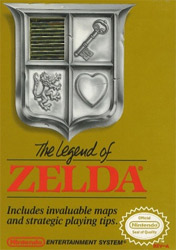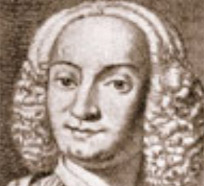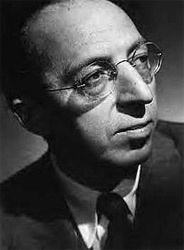Does Santa Claus Own “Ho, Ho, Ho”?
I should say at the start that the headline of this post isn’t especially original. Mark Parisi, of the “Off the Mark” cartoons, drew a courtroom scene in which Santa Claus tells a judge that “this green freak” (the ‘Jolly Green Giant’ of vegetable-sales fame, pictured above) has ripped off Santa’s signature phrase.
And so it goes.
In 2005, Coldplay’s singer, Chris Martin, told a magazine interviewer, “We’re definitely good, but I don’t think you can say we’re that original. I regard us as being incredibly good plagiarists.”
He was presumably trying to be humble, and at the same time a bit provocative. Still, in hindsight those words seem reckless.
I wrote in my last blog post about Men at Work, the great ‘80s group, and the recent death of Greg Ham. I mentioned a successful plagiarism lawsuit over their song Land Down Under, and promised further discussion of the broad issue of musical plagiarism. Instead of re-hashing that case, though, I think I’ll highlight another today, because it is better adapted to the broader issues involved.
Long Live Life
 In 2008 Martin’s group, Coldplay, came out with an album, featuring the single “Viva La Vida.” Listen to it here.
In 2008 Martin’s group, Coldplay, came out with an album, featuring the single “Viva La Vida.” Listen to it here.
Soon a nearly-unknown U.S. band, Creaky Boards, claimed briefly that the song was too similar to one of theirs, and a video on YouTube in which they made this claim went viral.
Read about it here.
There is a certain similarity. It is certainly greater and more extended than the overlap between “Land Down Under” and “Kookaburra Sits in the old Gum Tree”!
But in the case of Coldplay and Creaky Boards, there clearly wasn’t copying. According to the theory by Creaky Boards member Andrew Hoepfner, Coldplay’s Chris Martin dropped in on a performance of theirs in New York in October 2007. Hoepfner and his bandmates recognized Martin there on a specified day and were delighted that he seemed to be so ‘into’ their music. Perhaps too much so….
Unfortunately for this claim, Martin was in London at the time he supposedly heard the song. Also, there was a demo version of the song in existence as early as March 2007, long before CB had ever done the similar song of theirs.
 So decisive was the proof that Creaky Boards themselves went out of their way (honorably) to say: Oops. “Our bad.” Hoepner himself then offered another explanation of the similarity: “Coldplay and I are just heavily influenced by The Legend of Zelda.”
So decisive was the proof that Creaky Boards themselves went out of their way (honorably) to say: Oops. “Our bad.” Hoepner himself then offered another explanation of the similarity: “Coldplay and I are just heavily influenced by The Legend of Zelda.”
The Legend of Zelda? They get their inspiration from the soundtrack of fantasy video games? Well … I guess everybody gets inspiration from somewhere.
Education is Theft?
But this raises an intriguing question. When, for music, does “influence” become theft? It isn’t a bad thing to be influenced, after all. It is synonymous with education. No musician escapes the influence of colleagues: even Johann Sebastian Bach, as original a composer as ever lived, shows the distinct influence of Dietrich Buxtehude and Antonio Vivaldi.

Antonio Vivaldi
It is precisely because there exists reason to be concerned that influence will be stigmatized as theft that the idea of a “Creative Commons” has taken off recently.
Consider, for that matter, the artwork (above) for the album Viva la Vida. It is simply a reproduction of the Eugène Delacroix painting “La Liberté guidant le people,”(Liberty Leading the People) in which an allegorical figure who looks like a bustier version of the lady in New York Harbor stands on top a mound of corpses holding the tricolor flag in her right hand and urging a new wave of cannon fodder forward.
The only difference between the Delacroix painting and the Coldplay album cover is that the latter has the album’s title superimposed – in a way that looks spray painted, like a bit of graffito.
It isn’t a copyright issue so long as that image is in the public domain. But even in a loose metaphorical sense we wouldn’t think of this as “stolen” from Delacroix unless we thought that Coldplay were somehow trying to take credit for it themselves. Otherwise, we would simply say that they are visually quoting Delacroix.
If you can “quote” visually then presumably you can “quote” musically, too.

Aaron Copland
A quite well known example of this may be found in the use of an old Shaker hymn by Aaron Copland in Appalachian Spring.
Yet I don’t think that Hoepfner was claiming that Coldplay and Creaky Boards were both paying homage to The Legend of Zelda in the same way that Copland was paying homage to the Shakers. No, there is a degree of “influence” that is neither explicit quotation nor plagiarism/theft. It is tough to get to precision in these matters.
There is a coda. The issue of the originality (or otherwise) of Viva La Vida didn’t go away after Creaky Boards abandoned their own claims. Two other claimants came forward: Joe Satriani and Yusuf Islam (formerly known as Cat Stevens). Satriani said the sing incorporates much of his “If I Could Fly,” whereas Islam says it’s a lot like his “Foreigner Suite.”
What is behind the flurry of claims to have been the source of that particular song?
There is the simple fact that these songs – any songs – are not made by stringing together notes at random. There are combinations of sounds we are “hard wired” to like, and those that we aren’t. You can imagine that a composer is at the piano, or strumming his guitar, plucking out notes. When he hits upon a neat-sounding combination, and it isn’t something he has heard before, he notes it down and smiles.
But you and I, dear reader, have very similar brains. Our wiring is determined by God – or, if you prefer, by the path-dependent history of our species. What may strike you as a neat and new combination of sounds is very likely to strike me likewise. In the case of the common features of Viva la Vida and the similar songs by Creaky Boards, Satriani, Cat Stevens, and whoever composes for The Legend of Zelda!, and so forth, the likeliest explanation is simply that some very plausible, frequently traveled, neural pathway is involved. Let us leave it at that!
And no, Santa doesn’t own “Ho Ho Ho.”
Let’s end this meditation with that tune Copland appropriated, sung wonderfully by Judy Collins:


